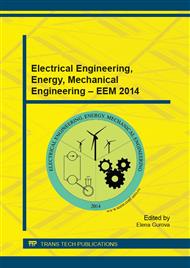[1]
A.I. Belyaev, O.S. Bochvar, N.N. Bujnov, Metallurgical and other aluminum and its alloys, Moscow, (1971).
Google Scholar
[2]
A.V. Arendarchuk, A.A. Astafev, Y.A. Bashnin, Heat treatment in mechanical engineering, Moscow, (1980).
Google Scholar
[3]
E.N. Smirnova, E.G. Krylov, The problem of computer-aided design process, taking into account technological heredity, Proceedings of the Volgograd State Technical University 7 (2011) 100-102.
Google Scholar
[4]
V.V. Abramov, Residual stresses and strains in the metals, Moscow, (1963).
Google Scholar
[5]
Bozidar Liscic, Hans M. Tensi, Lauralice C.F. Canale, George E. Totten, Quenching Theory and Technology, second ed. CRC Press, (2011).
DOI: 10.1201/9781420009163
Google Scholar
[6]
X. Yang., J. Zhu, Z. Nong, Z. Lai, D. He, FEM simulation of quenching process in A357 aluminum alloy cylindrical bars and reduction of quench residual stress through cold stretching process, Comput. Mater. Sci. 69 (2013) 396-413.
DOI: 10.1016/j.commatsci.2012.11.024
Google Scholar
[7]
J.S. Robinson, S. Hossain, C.E. Truman, A.M. Paradowska, D.J. Hughes, R.C. Wimpory, M.E. Fox, Residual stress in 7449 aluminium alloy forgings, Mater. Sci. Eng. 10-11 (2010) 2603-2612.
DOI: 10.1016/j.msea.2009.12.022
Google Scholar
[8]
V.M. Zinchenko, Technological heredity in producing parts, Met. Technol. 5 (2007) 42-52.
Google Scholar
[9]
O.I. Drachyov, Managing technological heredity of low-stiffness parts, (2011).
Google Scholar
[10]
F.F. Tsvetkov, B.A. Grigoriev, Heat and Mass Transfer, Moscow (2005).
Google Scholar


